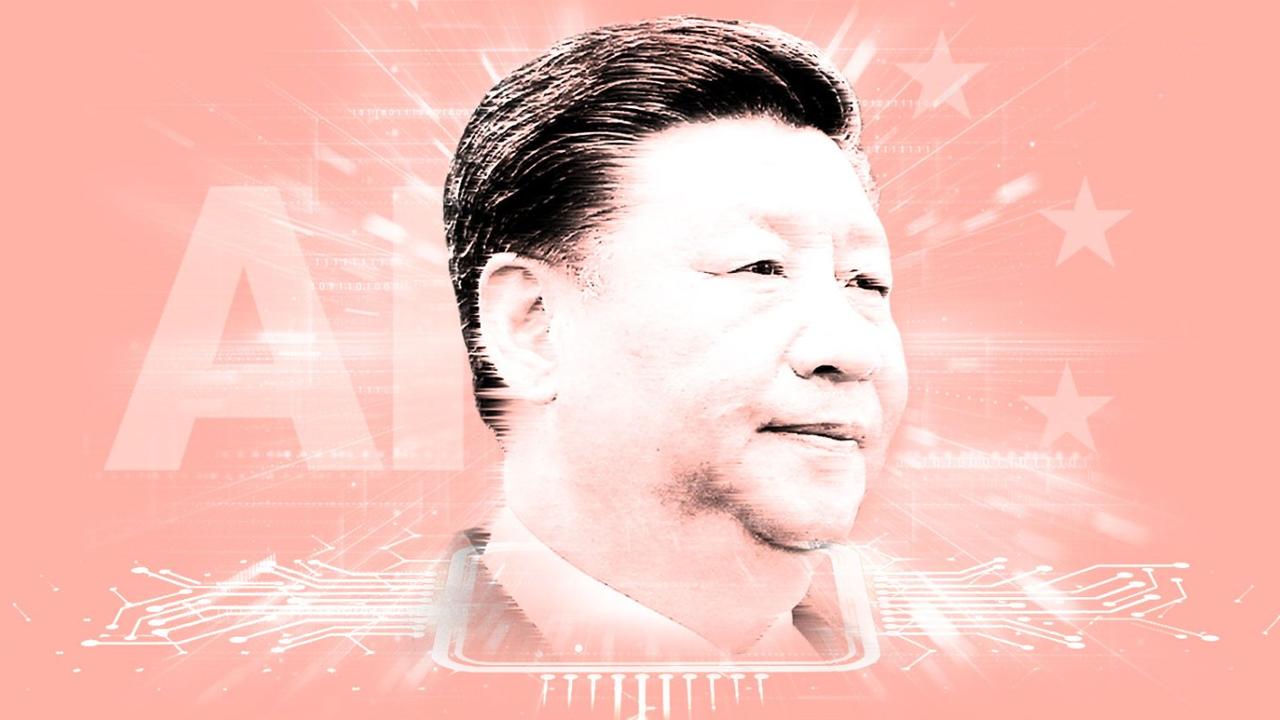Modi heralds new era as he opens temple in Ayodhya, India
The Indian prime minister celebrated the Ram Mandir building — on the site of a former mosque — as a temple to last a thousand years. Critics claimed the event politicised Hinduism.
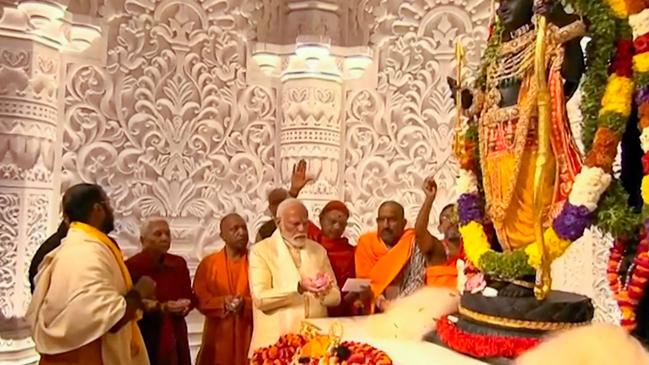
Amid the sound of conch shells and Vedic chanting, India’s largest temple has been inaugurated in a resurgence of Hinduism heralded by Narendra Modi as the start of a new era for his country.
Watched by some 9,000 guests, the prime minister performed the consecration ceremony at the Ram temple at Ayodhya, northern India, “awakening” an idol of the youthful deity Rama.
In doing so, he has fulfilled the dreams of generations of Hindus by building a temple on the spot they believe to be Rama’s birthplace, which for centuries had been occupied by a mosque. “January 22, 2024 is not merely a date in the calendar but heralds the advent of a new era,” Modi said.
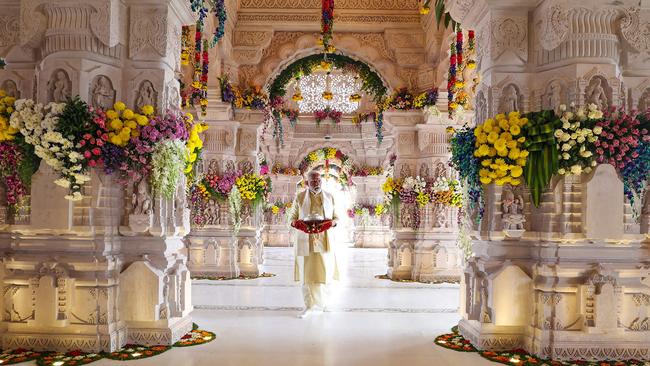
The ceremony, known as Pran Pratishtha, is the moment when Hindus believe the deity’s spirit passes into the idol, after which it can accept prayers and grant blessings.
“The supernatural moment of the consecration ... is going to leave everyone emotional,” Modi posted on Twitter/X minutes before the ceremony began. “It is my great pleasure to be a part of this divine programme.”
The temple inauguration is the latest manifestation of one of India’s oldest and most fractious disputes, which divides Hindus and Muslims. It also has potentially far-reaching consequences for India’s identity and the character of the state for decades to come.
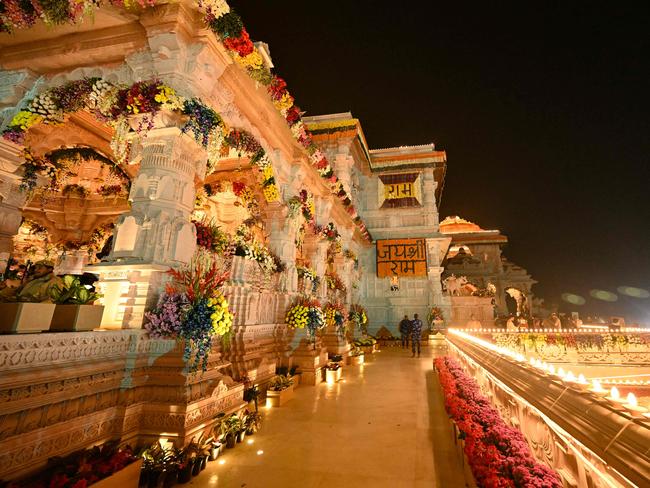
Yesterday (Monday) Modi, the leader of the Hindu nationalist Bharatiya Janata Party (BJP), walked past ornately sculpted decorations of flowers into the inner sanctum of the temple, making offerings to the feet of the idol, which was adorned in gold, rubies, emeralds and garlands.
For a fortnight before the ceremony, Modi had projected himself as a religious figure, visiting temple after temple, dressed in priestly clothes and performing various rituals. In preparation for the ceremony he had been fasting, living only on fruit and coconut water, sleeping on the floor and praying extensively.
However, he has also been criticised for compromising the country’s secular constitution and politicising a highly controversial site.
The new temple, built “to last a thousand years”, is a source of joy for many Hindus as a matter of private faith. For the ruling BJP, it is also a highly public statement after years of election promises.
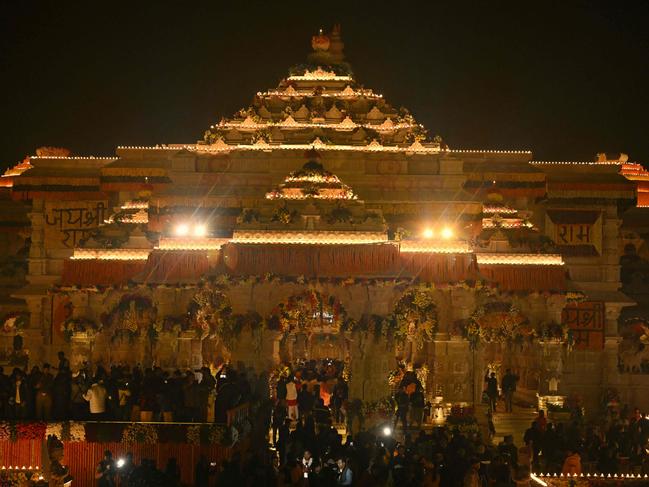
Construction began in 2019 when the Supreme Court granted the land to Hindus for a temple, two decades after a Hindu mob destroyed the mosque that had stood there for about 500 years. The BJP’s Yogi Adityanath, the chief minister of Uttar Pradesh, said the temple marked a new dawn and cultural renaissance in India. “It is not merely a temple. It is a national temple,” he said, extolling the dedication to Rama, the hero of the Ramayana epic and one of Hinduism’s most revered figures.
Liberals such as the columnist Pratap Bhanu Mehta, writing in The Indian Express, said the ceremony symbolised the transformation of the Indian state into a custodian of the Hindu faith. It “marks the consecration of Hinduism as a political religion”, he added. “It is not just the moment where the state ... ceases to be secular. It is also the moment where Hinduism ceases to be religious.”
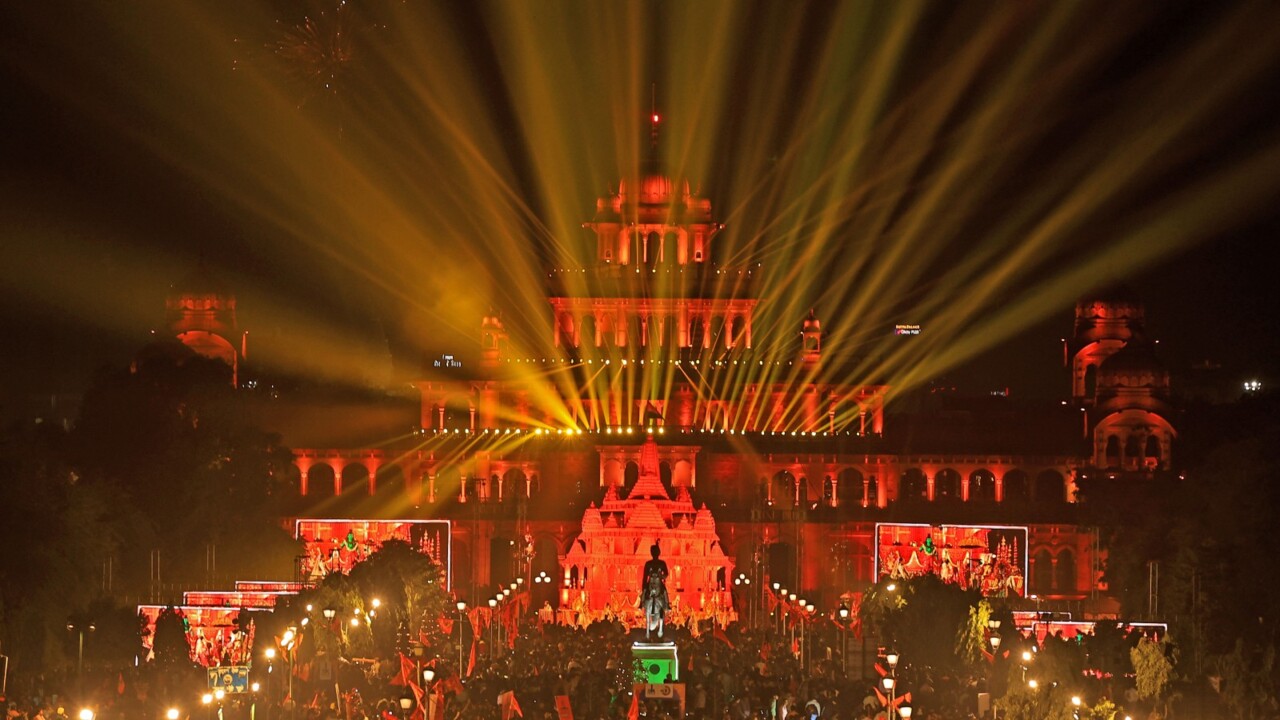
Most of India’s elite in politics, business, Bollywood and sports - including India’s richest man, Mukesh Ambani - attended the event. Airports near Ayodhya had to cope with about 100 private jets landing in quick succession.
Thousands of believers have also converged on Ayodhya on foot, bicycles and even on roller skates, some travelling more than 600 miles for the event. However, opposition leaders stayed away from what they described as a political event promoting Modi and his party.
The prime minister has called on Indians to celebrate the day as a second Diwali, the festival which traditionally marks Rama’s return to Ayodhya after 14 years in exile. Millions of earthen lamps were lit across India last night (Monday), with shopping complexes, markets, office blocks and residential areas decorated with saffron flags and bunting. Devotional songs rang out from temples.
Several government hospitals in Delhi initially announced they would close for the morning of the festivities, before a public backlash forced them to reconsider.
The Times


